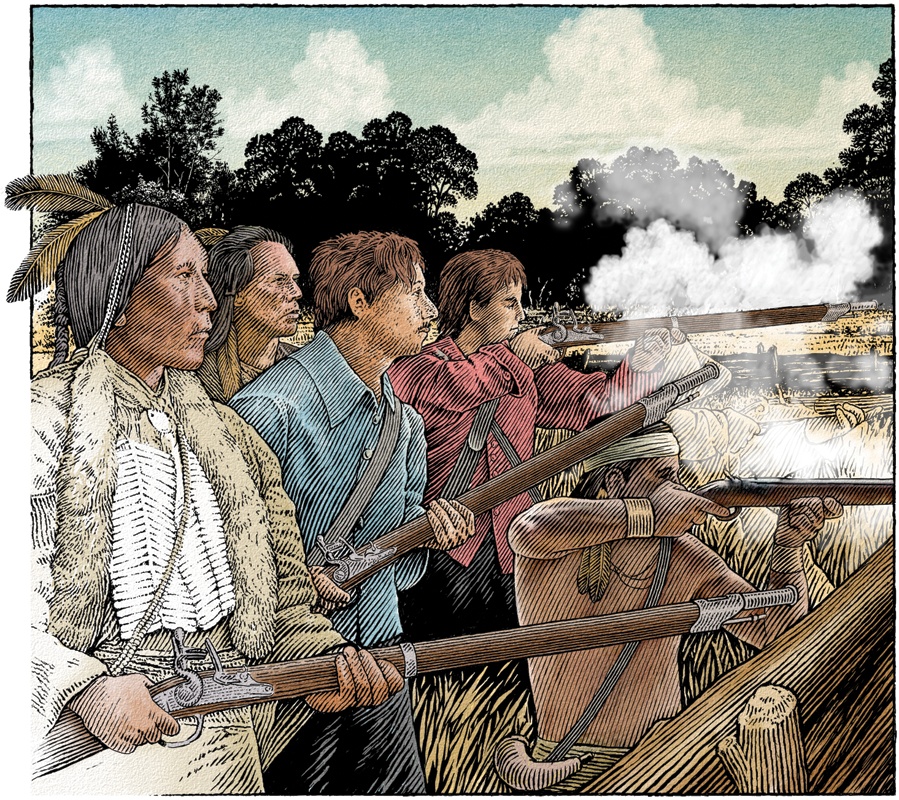When you see the town of Spanish Fort on a Texas map, it jumps out at you. It’s tucked into a long bend of the Red River, just north of Nocona.
You believe that the Spanish didn’t have any forts that far north. You wonder if the structure is still intact.
First, the fort, which included wooden stockades, entrenchments and a moat, is long gone. Only an historical marker stands to mark its original location.
Second, “Spanish” fort is inaccurate. The fortification was actually a French structure built at the location of a Taovaya Indian village in about 1719. The Taovayas had just moved into the region when the French ventured farther west along the Red River. The French and Taovaya developed a successful trading partnership.
Third, when the only major defense of the fort was mounted in 1759, the attacking forces were actually Spanish, and the fort defenders included a French contingent along with Taovaya, Wichita and Comanche.
When an early Anglo settler visited the ruins 100 years later, he assumed the inhabitants were Spanish. Hence the name “Spanish Fort.”
And finally, the Native Americans’ rout of the Spanish at the French/Taovaya fortress marked Spain’s earliest defeat in Texas, and this defeat helped limit Spanish expansion.
The Spanish Fort played a role in the broader history of 18th-century Texas. That role had its origins about 250 miles south where, in the mid-1750s, the Spanish established Mission San Saba and Presidio San Saba along the San Saba River to look for silver and proselytize the Apache. Not long after the two complexes were completed, the Apaches boasted about their mighty new partners.
When word of a new force in the region reached the Comanches, they marshaled some of their Wichita, Taovaya and Yojuane allies and headed south. On the morning of March 16, 1758, the Comanche and their 2,000-warrior confederacy attacked the mission, massacred most of its inhabitants and torched most of the buildings.
The scantily numbered Spanish garrisoned at Presidio San Saba helplessly witnessed the upstream smoke and gunfire.
When the Spanish sought revenge months later, they discovered an old fortification flying the French colors on the Red River. It was protected by a tributary moat and—to the Spaniards’ surprise—manned by Taovaya, Wichita and Comanche Indians armed with French muskets.
The attack on the fort failed. The Spanish retreated hastily, leaving their supply train and cannons behind. The disgraced force traveled 18 days to Presidio San Saba. The Comanche harassed them all the way, and the Spanish never sought further military redress, going so far as to abandon the San Saba mission and presidio.
Within a decade, there was no European influence left in the area of Spanish Fort. In 1771, Spanish Louisiana normalized relations with the Taovaya. The Taovayas were decimated by smallpox in the early 1800s, and survivors abandoned the area.
The Comanche remained a force on the Texas Plains until the late 19th century, but the ranks of the Taovaya shrank, and they joined the Wichita.
Today, all that remains of the fort is a historical marker mounted on an 8-foot-tall shaft of red granite in the town square and the Taovayas Indian Bridge across the Red River, connecting Texas FM 677 with Oklahoma State Highway 89.
If you’re interested in further research regarding Spanish Fort, consult Henry Easton Allen’s “The Parilla Expedition to the Red River in 1759” in the July 1939 edition of the Southwestern Historical Quarterly (Vol. 43, No. 1, pages 53-71) and Llerena Friend’s “Old Spanish Fort” in the West Texas Historical Association Yearbook (Vol. 16, No. 3). More information also is available at the Handbook of Texas online.
——————–
E.R. Bills is a writer from Aledo.


